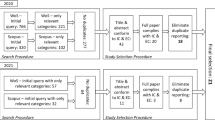Abstract
Much research has been devoted over the years to investigating and advancing the techniques and tools used by analysts when they model. As opposed to what academics, software providers and their resellers promote as should be happening, the aim of this research was to determine whether practitioners still embraced conceptual modelling seriously. In addition, what are the most popular techniques and tools used for conceptual modelling’ What are the major purposes for which conceptual modelling is used’ The study found that the top six most frequently used modelling techniques and methods were ER diagramming, data flow diagramming, systems flowcharting, workflow modelling, RAD, and UML. However, the primary contribution of this study was the identification of the factors that uniquely influence the continued-use decision of analysts, viz., communication (using diagrams) to/from stakeholders, internal knowledge (lack of) of techniques, user expectations management, understanding models integration into the business, and tool/software deficiencies.
Access this chapter
Tax calculation will be finalised at checkout
Purchases are for personal use only
Preview
Unable to display preview. Download preview PDF.
Similar content being viewed by others
References
Batra, D., Marakas, G.M.: Conceptual data modelling in theory and practice. European Journal of Information Systems 4(3), 185–193 (1995)
Chang, S., Kesari, M., Seddon, P.: A content-analytic study of the advantages and disadvantages of process modelling. In: Burn., J., Standing, C., Love, P. (eds.) 14th Australasian Conference on Information Systems, Perth (2003)
Floyd, C.: A comparative evaluation of system development methods. In: Information Systems Design Methodologies: Improving the Practice, pp. 19–37. North-Holland, Amsterdam (1986)
Iivari, J.: Factors affecting perceptions of CASE Effectiveness. IEEE Software 4, 143–158 (1995)
Karahanna, E., Straub, D.W., Chervany, N.L.: Information Technology Adoption Across Time: A Cross-Sectional Comparison of Pre-Adoption and Post-Adoption Beliefs. MIS Quarterly 23(2), 183–213 (1999)
Karam, G.M., Casselman, R.S.: A cataloging framework for software development methods. IEEE Computer, 34–46 (February 1993)
Lindland, O.I., Sindre, G., Solvberg, A.: Understanding Quality in Conceptual Modeling. IEEE Software, 42–49 (March 1994)
Necco, C.R., Gordon, C.L., Tsai, N.W.: Systems analysis and design: Current practices. MIS Quarterly, 461–475 (December 1987)
Olle, T.W., Hagelstein, J., Macdonald, I.G., Rolland, C., Sol, H.G., van Assche, F.J.M., Verrijn-Stuart, A.A.: Information Systems Methodologies: A Framework for Understanding. Addison-Wesley, Wokingham (1991)
Persson, A., Stirna, J.: Why Enterprise Modelling? An Explorative Study Into Current Practice. In: 13th Conference on Advanced Information Systems Engineering, Switzerland, pp. 465–468 (2001)
Sedera, W., Gable, G., Rosemann, M., Smyth, R.: A success model for business process modeling: findings from a multiple case study. In: Liang, T.P., Zheng, Z. (eds.) 8th Pacific Asia Conference on Information Systems (PACIS 2004), Shanghai (2004)
Tan, M., Teo, T.S.H.: Factors Influencing the Adoption of Internet Banking. Journal of the Association for Information Systems 1, 1–43 (2000)
Wand, Y., Weber, R.: Research Commentary: Information Systems and Conceptual Modeling – A Research Agenda. Information Systems Research 13(4), 363–376 (2002)
Author information
Authors and Affiliations
Editor information
Editors and Affiliations
Rights and permissions
Copyright information
© 2004 Springer-Verlag Berlin Heidelberg
About this paper
Cite this paper
Davies, I., Green, P., Rosemann, M., Gallo, S. (2004). Conceptual Modelling – What and Why in Current Practice. In: Atzeni, P., Chu, W., Lu, H., Zhou, S., Ling, TW. (eds) Conceptual Modeling – ER 2004. ER 2004. Lecture Notes in Computer Science, vol 3288. Springer, Berlin, Heidelberg. https://doi.org/10.1007/978-3-540-30464-7_4
Download citation
DOI: https://doi.org/10.1007/978-3-540-30464-7_4
Publisher Name: Springer, Berlin, Heidelberg
Print ISBN: 978-3-540-23723-5
Online ISBN: 978-3-540-30464-7
eBook Packages: Springer Book Archive




